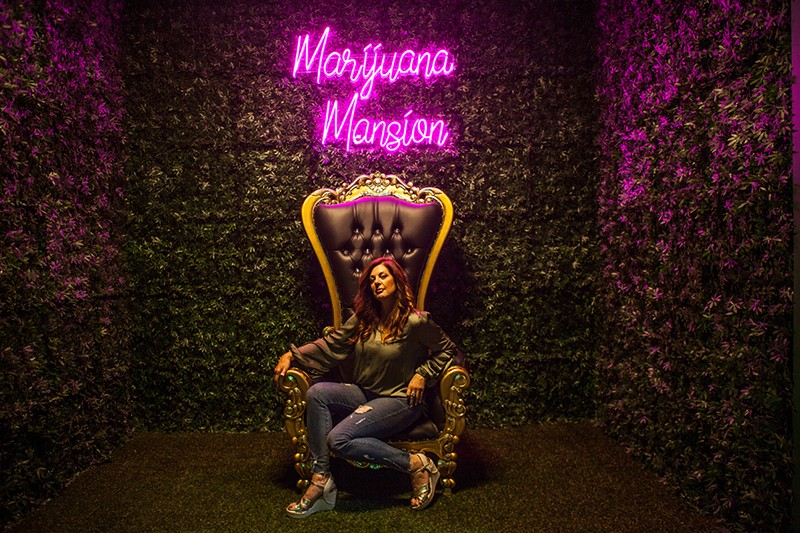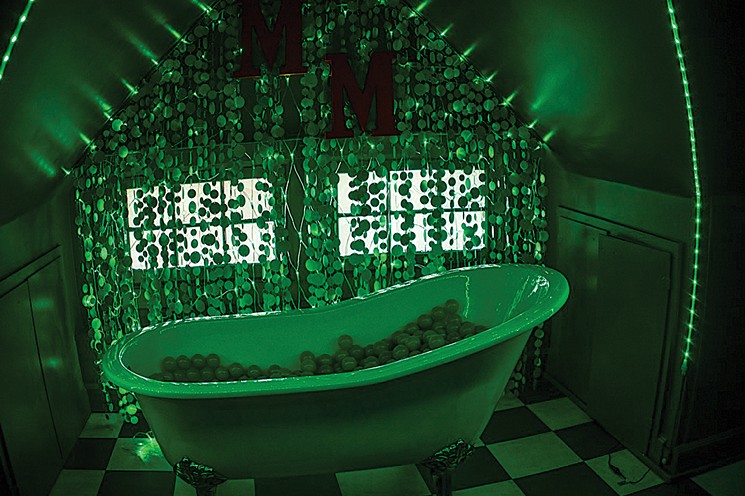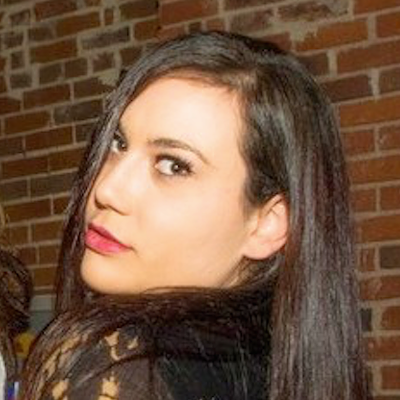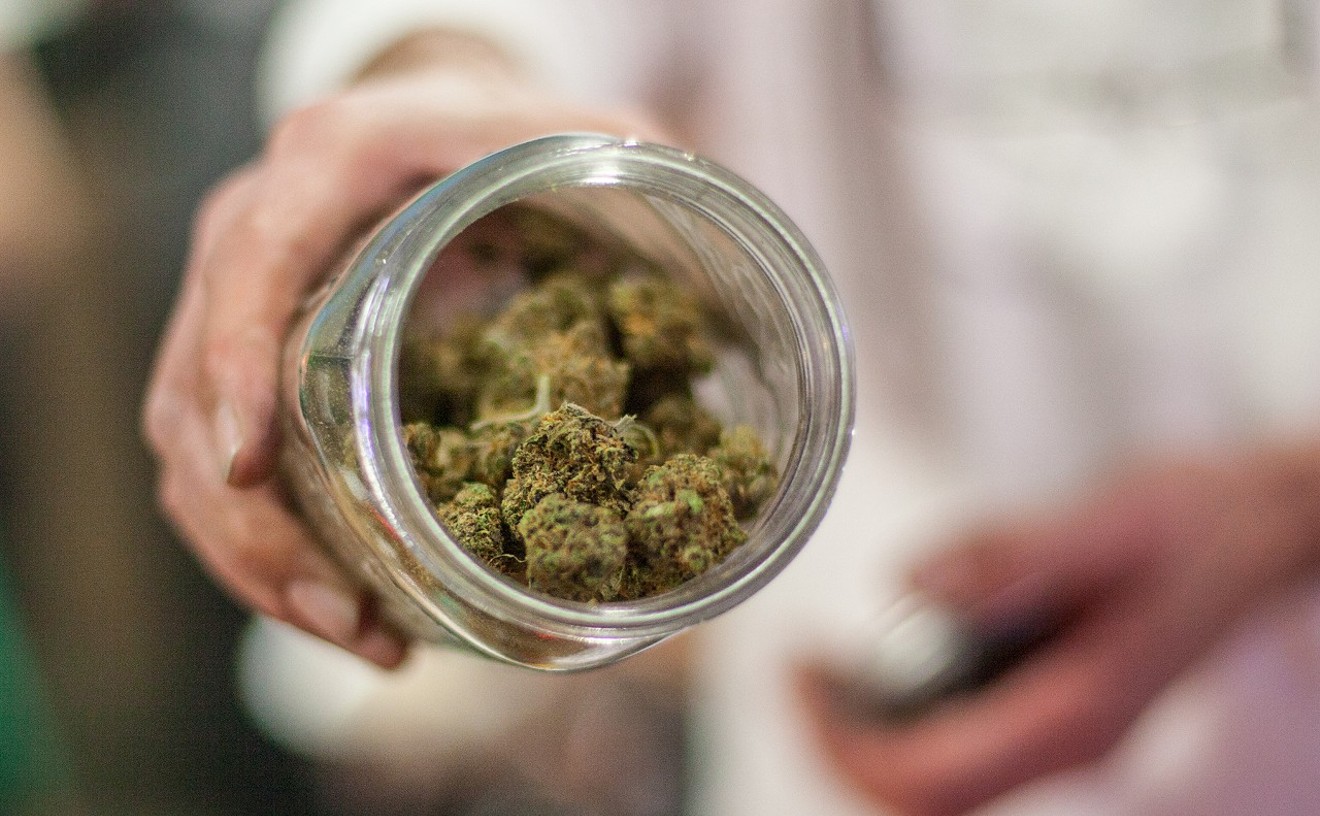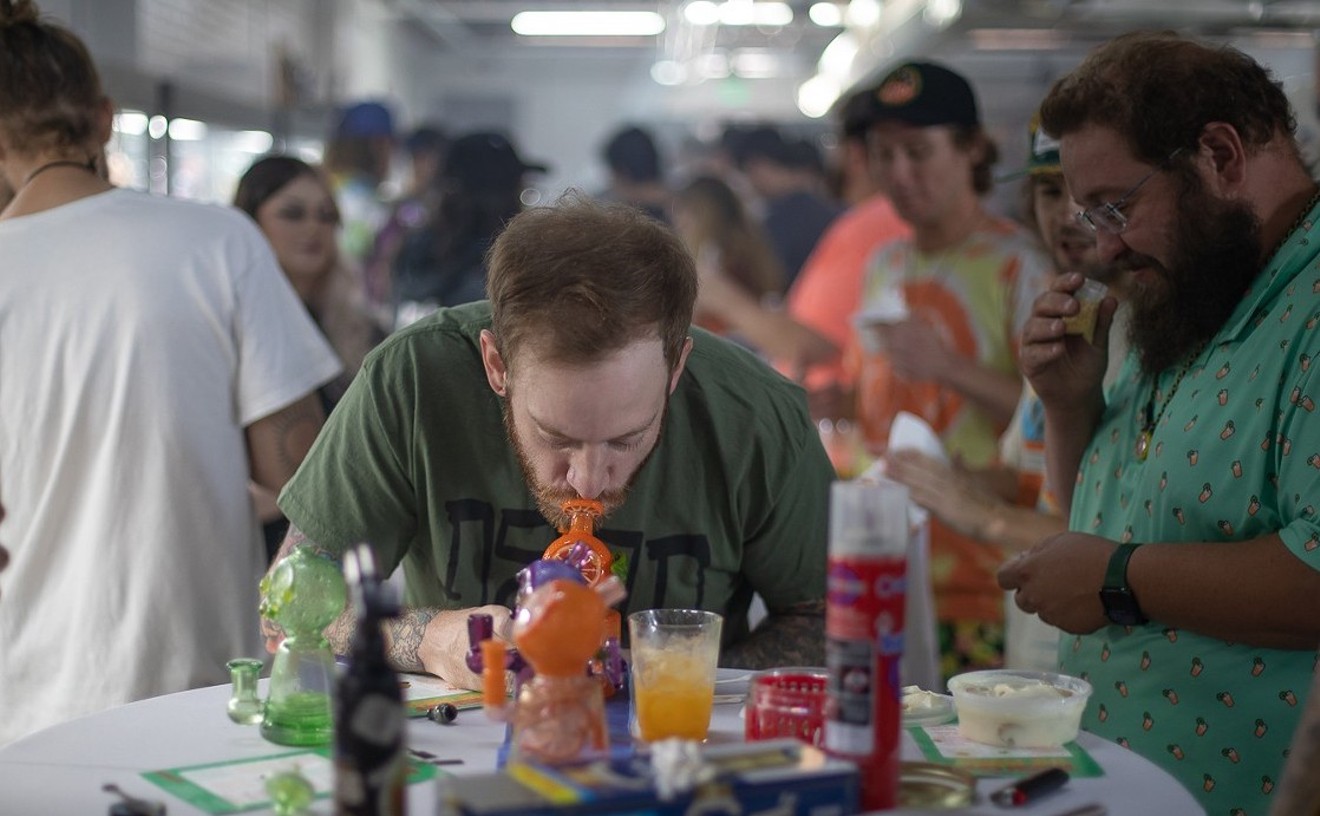If these walls could talk, they’d give you a contact high.
Welcome to the Marijuana Mansion.
A Spirited Past
The 4,200-square-foot sandstone mansion at 1244 Grant Street is considered one of Denver’s best examples of “high Victorian” architecture, blending Richardsonian Romanesque Revival with ornate Queen Anne design.Built for Joseph Creswell and his family in 1889, it was known as the Creswell Mansion until recently, when it got a new nickname. Creswell was a prominent Denver businessman, president of the Colorado Marble & Mining Company as well as president of the Manufacturers Exchange, working with the chamber of commerce to push the city as a manufacturing hub.
The building was constructed by John J. Huddart, one of the premier architects in the region. During his robust career, Huddart designed six Colorado courthouses and numerous armories, schools, libraries and notable homes across the state. The Creswell Mansion marked a high point in his career, and today it’s one of the last original structures along what was known as Millionaire’s Row in the late 1800s. It was designated a landmark in 1975.
Its sandstone exterior is adorned with floral and fish carvings, as well as Greco-Roman imagery that leads up to a balcony and wraps around three chimneys. A griffin, two dogs and an eagle adorn the front, which also includes a gargoyle.
Historian Kevin Pharris included the home in his 2011 book, The Haunted Heart of Denver. That gargoyle could be Bacchus, Pan or a satyr, he speculates, as all were popular in Greco-Roman imagery. But one of the people Pharris took on a tour of the building thought that it looked like Satan. “Clearly, that’s the face of the devil,” he recounts the tourist saying. “Satan himself looks out from the front of the building.”
For his part, Pharris believes that no Victorian-era architect would purposefully put a demon on the exterior of a home, and he found no such request in Creswell’s architectural notes.
During another Capitol Hill ghost tour, a property manager of the Creswell Mansion welcomed Pharris’s group inside. “We have the hardest time keeping tenants in here. People feel as if they are constantly being watched, and not a nice ‘Hi, I’m a friendly ghost, welcome to my home’ being watched,” he reports the manager saying. “No, the sensation is one of trepidation, the feeling that someone unpleasant is sneaking up right behind the person, intent on malevolence: ‘If I could only manifest, I’d strangle you to death right now.’”
The property manager told Pharris that “the building would go through company after company as people succumbed to the overbearing threat in the air.”
But on still another tour, a skeptical electrician told Pharris that concerns about ghosts were “bullshit.” He could tell that the home’s electrical box was too high, he told the historian, causing an abnormal electrostatic current in the air. “There’s no ghost in there. I know the problem,” the electrician explained. “I’ve dealt with this for years. People whose electric boxes are set too high report the same kind of thing. Having your electric boxes set too high creates this inaudible vibration in the air. You may not be able to hear it, but you can sure feel it, in your nerves and in your bones. That’s all they need to do here — have an electrician come in and get their place fixed.”
Hearing this explanation, another attendee on a Pharris tour suggested that ghosts flock to the Creswell Mansion precisely because of the electrostatic energy. “He fails to understand! It is quite difficult for spirits to manifest on our side of the veil, and our limited awareness makes their effort even more arduous to sustain,” Pharris was told. “Electrical emanations are a primary form of sustenance for the non-corporeal, allowing them greater ease in manifestation as well as maintenance. This place might have its electric box set too high, but that would only serve as a beacon, a bright lighthouse calling all the spirits in the neighborhood to a smorgasbord. This place would be ghost central.”
Phil Goodstein, another Denver historian and author who’s penned over twenty books on the history of the Mile High City, included the Creswell Mansion in his Ghosts of Capitol Hill. The primary use of gargoyles in architecture is “to scare away evil spirits,” he suggests, and if any spirits managed to make their way to the mansion, they’re remnants of the building’s time as “a medical clinic for the Union Pacific Railroad,” Goodstein says. “Maybe the doctors let in somebody.”
But Goodstein is less concerned about those spirits than he is about the current focus of the building.
“As it is, only in recent years have crazy forces taken control of the house,” Goodstein explains. “They poison people under the guise that marijuana is a harmless, recreational drug. It is actually part of a culture of death. This is the real evil spirit of the manor. The air pollution today is horrid. So is the constant air pollution of the marijuana crowd, the all-so-sophisticated people who discriminate against others by polluting our air. Obviously, there must be a ghost in the Creswell House, whereby this is supposed to be progress.”
Lighting Up
In 2013, the Creswell Mansion got new tenants who were in the process of shaping the state’s cannabis industry and would soon inspire the Marijuana Mansion nickname. The law firm of Vicente Sederberg LLP moved in right after Colorado voters approved Amendment 64, the proposal they’d helped write that legalized recreational marijuana in the state.“I always loved that house,” recalls Christian Sederberg, a founding partner of Vicente Sederberg with Brian Vicente. “I was walking back from lunch one day, saw them putting up a For Rent sign, and thought, ‘This is the spot.’ I love old houses, love Denver history. Being from Denver, I knew it was a special place, with the gargoyle, every detail. I hoped it would become a wonderful place to live and work, and it was. … It was super close to the Capitol, which was important.”
That’s because they were helping to put together the rules for an industry that had never been legal in the United States. “It’s a crazy story. We ran the campaign out of our office a block away — this crappy walk-up office — but we moved in right after the election,” Sederberg says. “That’s where all the implementation went down. The firm grew from five people to thirty people. The National Cannabis Industry Association moved in with us. First, it was Betty Aldworth from NCIA, just us for a while. That’s where all of our legislative work was done, right after we won, when the task force was formed. When everything was happening in order to implement the law.”
After Amendment 64 passed with 55.32 percent of the vote, then-Governor John Hickenlooper signed an executive order creating the Task Force on the Implementation of Amendment 64, to determine the “policy, legal and procedural issues” of the industry in this state. The 24 members of the group included Sederberg; Barbara Brohl, then the executive director of the Colorado Department of Revenue; John Salazar, then the Colorado Commissioner of Agriculture; dispensary proprietor Meg Sanders; and many more.
“It was a super-special time, a period of time where we were still small, getting big, but we were so fortunate,” recalls Sederberg. “At the time, it was a big old home; it wasn’t as functional as the office could be,” he explains. “But it definitely was an incredibly special place. I pictured the cool parties and fundraising events we could put on there. High hopes, but at that time we were just trying to make our law firm work. We were trying to build off the momentum of Amendment 64 and make it really work for Colorado.”
At one point, the firm threw a party for the Drug Policy Alliance that was attended by the 100 top drug-policy advocates in the world, according to Sederberg. “Someone said, ‘The cops are outside,’” he recalls. “I was trying to keep people calm. I went around the side and looked out. It was actually a haunted ghost tour.”
The guy leading the tour, holding a lantern, was Phil Goodstein.
If ghosts were hanging around, they seemed to approve of the cannabis crusaders. “I felt super, super welcomed,” Sederberg says. “I felt like we were going to be respectful and obviously bring some life back into the house. We were a bunch of young people with some good, strong energy, bringing people together. In February, March and April of 2013, I spent the night there fifty out of sixty nights. I slept on a pull-out bed upstairs in the attic. I never had any negative experiences, but there were definitely times that I felt the energy of the place and the age of the place.
“The basement has a separate exit. That was pretty spooky down there,” he continues. “We had an office party, and there were Ouija boards in the basement. Some of our senior attorneys were down there. When they came up, they were totally freaked out. I found it to be hilarious; they were down there doing Ouija. From all the horror films I’ve seen, Ouija seems not to be the way to do it. They had one of the more memorable experiences.”
Secret-passage staircases led from the basement to the main floors of the house. “You could sneak up these little secret passages,” Sederberg recalls. “It was just like out-of-a-horror-movie stuff. But in general, it felt very much like home. I loved going in there every day.”
The firm eventually outgrew the space, and moved to more functional digs at 455 Sherman Street. “We had to expand to a more functional office space,” Sederberg explains. “I definitely miss those days. Every time I drive by it, I get a little choked up.” Today the firm has offices in Los Angeles, Boston, New York and outposts in Florida and Washington, D.C.
Others saw possibility in the place, though. Cindy Sovine, a cannabis lobbyist, soon had a plan: She registered for the city’s first public consumption license in February 2018, with an eye to creating the Utopian Spa, a cannabis-friendly wellness retreat, in the Marijuana Mansion.
Her plan was denied, however, because the city determined that the building was too close to a child-care facility, which was 982 feet away rather than the 1,000 feet required under city regulations. Sovine even had the approval of the child-care facility for her project, but her application was still denied on appeal. “As more and more of the country legalizes marijuana, everyone is facing the same problem: where to allow people to consume,” Sovine said at the time. “Local governments are begging for clarity.”
While everyone waited for that clarity, the mansion was rented as an office for the apartment-construction project next door.
Back in Business
A very real spirit brought life back to the Marijuana Mansion. Lisa Leder bought the building in September 2019 for close to $1.2 million. “We came in and basically totally renovated the building,” explains Leder, now the creative director of the Marijuana Mansion. “I knew right away this would be the perfect location for an event space.” Leder studied both textiles and science in school and has an extensive background in art and design. After a stint with Kushner Lakefield in Manhattan, she received her MBA in finance. But real estate is in her bones. “My father was a commercial real estate developer and I worked with him growing up,” she says. “My dad had a love of older buildings.”
She inherited that love and made it the basis of her own real estate and interior design firm, working in both the commercial and residential worlds before moving to Denver. “I started investing in properties,” she says. “My background led me here. I’ve been doing a lot of investments in real estate here in Denver.”
But the most important was the building at 1244 Grant Street. “It had a history of being dubbed the Marijuana Mansion,” recalls Leder. “When I came to look at it, they were selling it as a new potential office space. As soon as I walked in, I thought, ‘No, this place is so special.’ Behind the building is the carriage house; the carriage house is a licensed dispensary. So it goes hand in hand.”
Her team put $250,000 into restoring the building, down to its wood carvings and original tiles. “There are a lot of old photographs of Denver,” she says, describing the process. “I went to art antique stores. I found photos and props that are original to that time frame. It’s all over the mansion.”
She added some original touches, too, including interior murals by an all-female team of Denver artists. “We all collaborated together to create the mansion,” says Leder. “I brought on a project manager, Karen Kern. She worked with me and coordinated every room with me and helped me design the space. Karen was previously a visual merchandiser; she was really creative and talented and had a lot of great ideas.
“Together, we scoured every antique store in Denver,” continues Leder. “We went to Goodwill, Craigslist, you name it. She connected me with an artist named Shannon Barber, who created two rooms. So basically, Karen and I decided what the theme would be for each room. We decided to go look for Denver’s local artists, [and] we found Ellie Paisley and Ally Grime. We gave them each a room to do. We talked to them about their vision. They gave a mock-up of their vision, and we said, ‘Yes, do it.’”
The Marijuana Mansion reopened its doors right after the new year. Leder scheduled a grand-opening bash for March 21 — and then COVID hit. “That was the end of that,” she says. “It put everything on hold. We had grand-opening events planned; we had so many different events booked.”
Most of them have been postponed, and in the meantime, the Marijuana Mansion is hosting small, private tours and events. The visitors who’ve come through the place have marveled at the transformation.
“It’s funny, everyone who comes in here has a favorite room,” Leder says. “My favorite room is the historical room. That’s the one in the front of the mansion. I spent the most amount of time on that one. It’s a sitting room, maybe what it would look like back in the day, with a fireplace. My other favorite is the ladies’ boudoir that leads into a secret speakeasy room. We have a lot of secret rooms.”
And rooms with secrets. “Ellie Paisley told me when she was painting her room one night, she was on a ladder,” Leder recounts. “She felt footsteps up the staircase and felt a cold breath on her neck. She told me this the next day. I told her, ‘It’s haunted.’ She said, ‘I didn’t know it was haunted. I wouldn’t have been here painting alone late at night!’”
The building is certainly haunted by history, if not spirits. “The guys on the ghost tour told me that sometimes, people have said that they see this ghostly figure in the third-floor window looking out,” Leder says. “Personally, I haven’t experienced it.”
But some family members and associates have been spooked. “My sister was here, and she came running down and said, ‘There’s a ghost in the closet, there’s a ghost in the closet.’ Every time she’s here alone, she has some kind of ghost interaction,” Leder says. “My assistant, every time she’s here, she hears people banging on the closet door.”
So far, the ghosts have stayed away from the dispensary in the bright-green carriage house behind the Marijuana Mansion. “No one has reported anything in the dispensary,” confirms Alex Levine, co-CEO of Green Dragon. “However, there is a weird old door in the basement that opens up to a wall of brick, like someone blocked up a hallway or something. No one is sure what’s behind it.”
The dispensary officially opened its doors in October 2019, after Leder bought that property, too, and while the renovation of the Marijuana Mansion was under way. By then, the Green Dragon chain already had more than a dozen locations in Denver, where it got its start as a medical dispensary in 2009; it expanded to recreational sales as soon as those were allowed in January 2014. Today, Green Dragon has fifteen stores in Colorado, nine in the metro area.
But none of the other Green Dragon dispensaries have a neighbor like the Marijuana Mansion. “We have all toured the Mansion, and we absolutely love it,” Levine says. “Green Dragon has had some employee appreciation events at the Mansion since it opened, which were a blast. You really have to see it in person to believe it.”
Even Leder has trouble describing what makes the Marijuana Mansion so special: “This is a unique place that we think tourists will love to come and see. It’s part of the history of Denver. It’s not a museum; it’s not an event space, either. It’s hard to explain.
“It’s weird. Since I created it, I was here every little step of the way, and I’m kind of jaded,” she says. “Everybody sees it in their own way. We brought some people who had worked here before. They could not believe the transformation of the space. “
Forward Into the Future
The work at the Marijuana Mansion is just beginning.“My goal is to give back to the cannabis community,” Leder says. “To allow this beautiful building to be seen by everybody, and for everybody to enjoy it. Sure, I’d like to have events and make some money to pay the bills.
Right now, I think it’s important to get the message out that social consumption should be allowed. The government legalized recreational marijuana but gave no outlet to consume it unless you’re in your own private house. This is a place that’s safe; it’s not scary. It’s normal.”
But while the Marijuana Mansion would be “the perfect place for a social consumption lounge,” she continues, the city has not loosened its 1,000-foot rule, though Vicente Sederberg and other groups continue to work to amend cannabis laws to meet current realities, particularly regarding public consumption.
When the law and public-health guidelines allow it, Leder hopes that the Marijuana Mansion will bridge the gap of cannabis consumers, welcoming tourists and locals alike. “My vision would be that it would still remain as a private event space, for any kind of event,” she says. “I also would love to see it as a social consumption lounge for locals, not just tourists. Tourists, for sure, will want to come in and get this history, which is unusual and unique to Denver. It’s not like Las Vegas’s World of Weed or other museums. This is specific to Denver, and really relates to the history of Denver and this mansion.”
Meanwhile, locals will use it as a place where people can do yoga, listen to live music, attend comedy nights, party on at after-parties, and enjoy “any type of community event where there will be social consumption,” she predicts. “At some point, I believe people should be able to consume cannabis at a bar, just like you get a drink. This would be the next step.”
Right now, Leder is sharing the experiential space through photo shoots. “We always were open to private photo shoots. Originally, it was going to be tours. We were thinking we’d be open to the public — think an Instagram museum, like the Museum of Ice Cream in New York,” she explains. “It was partly designed with that in mind, and each room had a different theme. When COVID hit, we could still do photo shoots, but it would be one small group. We wanted to stay relevant on Instagram and not be forgotten about, so we opened up to influencers.”
The mansion has taken precautionary measures in order to make the experience safe. “Of course, we follow all the CDC guidelines: sanitizing, hand washing, masks — stuff that has all been ingrained in us by now,” she says. “The nice thing is, we have three floors. So anything we do here, we are able to socially distance people.
It’s not one big facility, but all different rooms. We are able to monitor people and limit the number of people.”
Still, her big plans for the fall — including a haunted mansion event and an Oktoberfest party — are all on hold. But she has hopes that by the time the country comes out of the pandemic, Denver will have worked out its social consumption issues.
Her spirits remain as high as the cannabis influencers walking the halls of the Marijuana Mansion. “There is no place for people to really go and consume,” she says. “I hope in the future, within five years, that will change, right? Five years is a long time. We’ve come a long way in the past ten years. I never thought ten years ago we’d be where we are today. We’ve made a lot of progress.
“I think that lawmakers will start to make this framework for social consumption. They will have areas where you can consume cannabis — maybe some music events where you can consume,” Leder continues. “If you’re going to see it anywhere, you’re going to see it in Denver first. They’ve already decriminalized mushrooms here. You’re going to see the change starting here in Denver. Slowly, hopefully, trickling to the other states where it’s been legalized.
“Other states look to us to see if we’re doing it right. If it’s done successfully in Denver, if we do it right, they jump on the bandwagon.”
Along with the ghosts.

